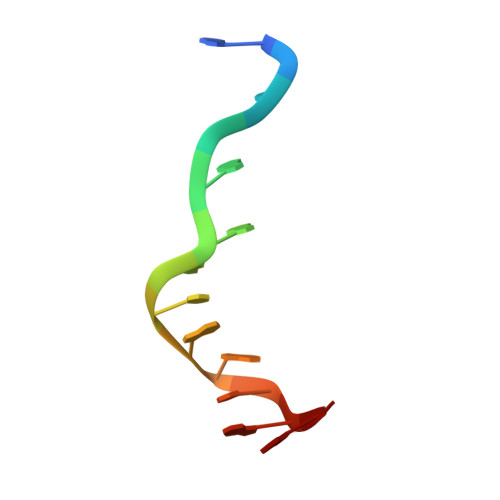Structural Implications of Homopyrimidine Base Pairs in the Parallel-Stranded d(YGA) Motif.
Tripathi, S., Paukstelis, P.J.(2016) Chembiochem 17: 1177-1183
- PubMed: 26629965
- DOI: https://doi.org/10.1002/cbic.201500491
- Primary Citation of Related Structures:
4ZYM, 5CV2 - PubMed Abstract:
DNA can adopt many other structures beyond the canonical B-form double helix. These alternative DNA structures have become increasingly significant as new biological roles are found for them. Additionally, there has been a growing interest in using non-canonical base pairs to provide structural diversity for designing DNA architectures for nanotechnology applications. We recently described the crystal structure of d(ACTCGGATGAT), which forms a tetraplex through parallel-stranded homo-base pairs and nucleobase intercalation. The homoduplex region contains a d(YGA⋅YGA) motif observed in crystal and solution structures. Here, we examine the structural implications of the homopyrimidine base pair within this motif. We determined crystal structures of two variants that differ from the original structure in the homopyrimidine base pairs and number of d(YGA) motifs. Our results show that the intercalation-locked tetraplex motif is predictable in these different sequence contexts and that substituting C⋅C base pairs for T⋅T base pairs introduces asymmetry to the homoduplex. These results have important implications for utilizing d(YGA) motifs in DNA crystal design and could provide a basis for understanding how local structures could be associated with repeat expansions.
Organizational Affiliation:
Department of Chemistry & Biochemistry, University of Maryland, 8051 Reagents Drive, College Park, MD, 20742, USA.















